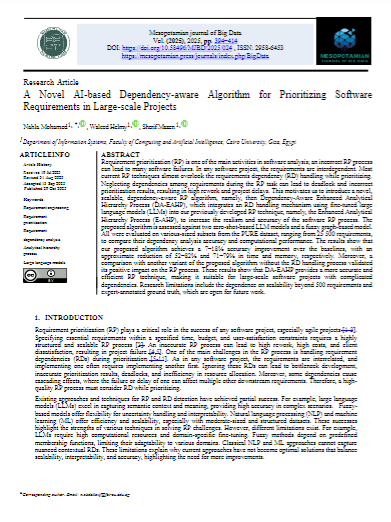A Novel AI-based Dependency-aware Algorithm for Prioritizing Software Requirements in Large-scale Projects
Main Article Content
Abstract
Requirement prioritization (RP) is one of the main activities in software analysis; an incorrect RP process can lead to many software failures. In any software project, the requirements are interdependent. Most current RP techniques almost overlook the requirements dependency (RD) handling while prioritizing. Neglecting dependencies among requirements during the RP task can lead to deadlock and incorrect prioritization results, resulting in high rework and project delays. This motivates us to introduce a novel, scalable, dependency-aware RP algorithm, namely, then Dependency-Aware Enhanced Analytical Hierarchy Process (DA-EAHP), which integrates an RD handling mechanism using fine-tuned large language models (LLMs) into our previously developed RP technique, namely, the Enhanced Analytical Hierarchy Process (E-AHP), to increase the realism and accuracy of the software RP process. The proposed algorithm is assessed against two zero-shot-based LLM models and a fuzzy graph-based model. All were evaluated on various-sized subsets from the PURE dataset, ranging from 25 500 requirements, to compare their dependency analysis accuracy and computational performance. The results show that our proposed algorithm achieves a 7–18% accuracy improvement over the baselines, with an approximate reduction of 52–82% and 71–79% in time and memory, respectively. Moreover, a comparison with another variant of the proposed algorithm without the RD handling process validated its positive impact on the RP process. These results show that DA-EAHP provides a more accurate and efficient RP technique, making it suitable for large-scale software projects with complicated dependencies. Research limitations include the dependence on scalability beyond 500 requirements and expert-annotated ground truth, which are open for future work.
Article Details
Issue
Section

This work is licensed under a Creative Commons Attribution 4.0 International License.
